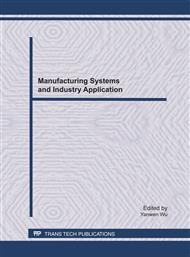[1]
Zhuo Chen. Relevant Research on Visualization Based on VTK and Its Application in TPS, Hefei University of Technology (2004).
Google Scholar
[2]
La-sheng Yu, De-yao Shen. A Refinement of the Scan Line Seed Fill Algorithm, Computer Engineering, vol. 29, 2003, pp.70-74.
Google Scholar
[3]
Xi-yao Chen, Wei Chen, Li-fang Tong. The Existing Problem and Solution for Arithmetic of Scan-Line Filling, Journal Of Northeast Dianli University Natural Science Edition, vol. 26, 2006, pp.52-56.
Google Scholar
[4]
Xiao-song Hao. The common problems and solutions of boundary-labeling method in the course of realization", Journal of Xi, an University of Engineering Science and Technology, vol. 20, 2006, pp.215-220.
Google Scholar
[5]
B.D. Ackland, N.H. Weste. The edge flag algorithm–A fill method for raster scan display, IEEE Transactions on Computers, vol. 30, 1981, pp.41-48.
DOI: 10.1109/tc.1981.6312155
Google Scholar
[6]
M.R. Dunlavey. Efficient polygon-filling algorithms for raster displays, ACM Transactions on Graphics, (1983).
DOI: 10.1145/245.248
Google Scholar
[7]
Shi-liang Xu. The computer algorithm, Tsinghua University Press, Beijing, (1992).
Google Scholar
[8]
Hua Ma, Feng Liu, Chun-li Ren. Computer aided drawing of the Bezier curve, Journal of Xidian University, vol. 29, 2002, pp.566-571.
Google Scholar
[9]
Nian Cai, Xiao-yan Tang, Shao-rui Xu, Fang-zhen Li. Segmentation of MELK images based on watershed algorithm, Application Research of Computer, vol. 26, 2009, pp.3175-3191.
Google Scholar
[10]
Hong-xia You, Wen-bo Xu. Iris Segmentation Based on Watersheds Algorithm, Micro-Computer Information, vol. 21, 2005, pp.175-181.
Google Scholar
[11]
E.N. Mortensen, A. Barrentw. Toboggan-based intelligent scissors with a four-parameter edge model, Proceedings of IEEE Conference on Computer Vision and Pattern Recognition, Washington DC: IEEE Computer Society, 1999, pp.452-458.
DOI: 10.1109/cvpr.1999.784720
Google Scholar
[12]
Vapn IK v. The nature of statistical learning theory, NY Springer, (1995).
Google Scholar
[13]
D. Wang. Unsupervised video segmentation based on watersheds and temporal tracking, IEEE Trans. on Circuits Syst Video Technology, vol. 8, 1998, pp.539-546.
DOI: 10.1109/76.718501
Google Scholar
[14]
Xin-ping Guan, Na Huang, Ying-gan Tang. New watershed segmentation algorithm via marker threshold, Systems Engineering and Electronics, vol. 31, 2009, pp.972-975.
Google Scholar


